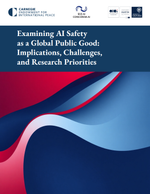The Journal of Immunology
Arturo Reyes-Sandoval, David H. Wyllie, Karolis Bauza, Anita Milicic, Emily K. Forbes, Christine S. Rollier and Adrian V. S. Hill June 29, 2011 1100302 doi: 10.4049/?jimmunol.1100302
View Journal Article / Working PaperIdentification of correlates of protection for infectious diseases including malaria is a major challenge and has become one of the main obstacles in developing effective vaccines. We investigated protection against liver-stage malaria conferred by vaccination with adenoviral (Ad) and modified vaccinia Ankara (MVA) vectors expressing pre-erythrocytic malaria Ags. By classifying CD8+ T cells into effector, effector memory (TEM), and central memory subsets using CD62L and CD127 markers, we found striking differences in T cell memory generation. Although MVA induced accelerated central memory T cell generation, which could be efficiently boosted by subsequent Ad administration, it failed to protect against malaria. In contrast, Ad vectors, which permit persistent Ag delivery, elicit a prolonged effector T cell and TEM response that requires long intervals for an efficient boost. A preferential TEM phenotype was maintained in liver, blood, and spleen after Ad/MVA prime–boost regimens, and animals were protected against malaria sporozoite challenge. Blood CD8+ TEM cells correlated with protection against malaria liver-stage infection, assessed by estimation of number of parasites emerging from the liver into the blood. The protective ability of Ag-specific TEM cells was confirmed by transfer experiments into naive recipient mice. Thus, we identify persistent CD8 TEM populations as essential for vaccine-induced pre-erythrocytic protection against malaria, a finding that has important implications for vaccine design.




